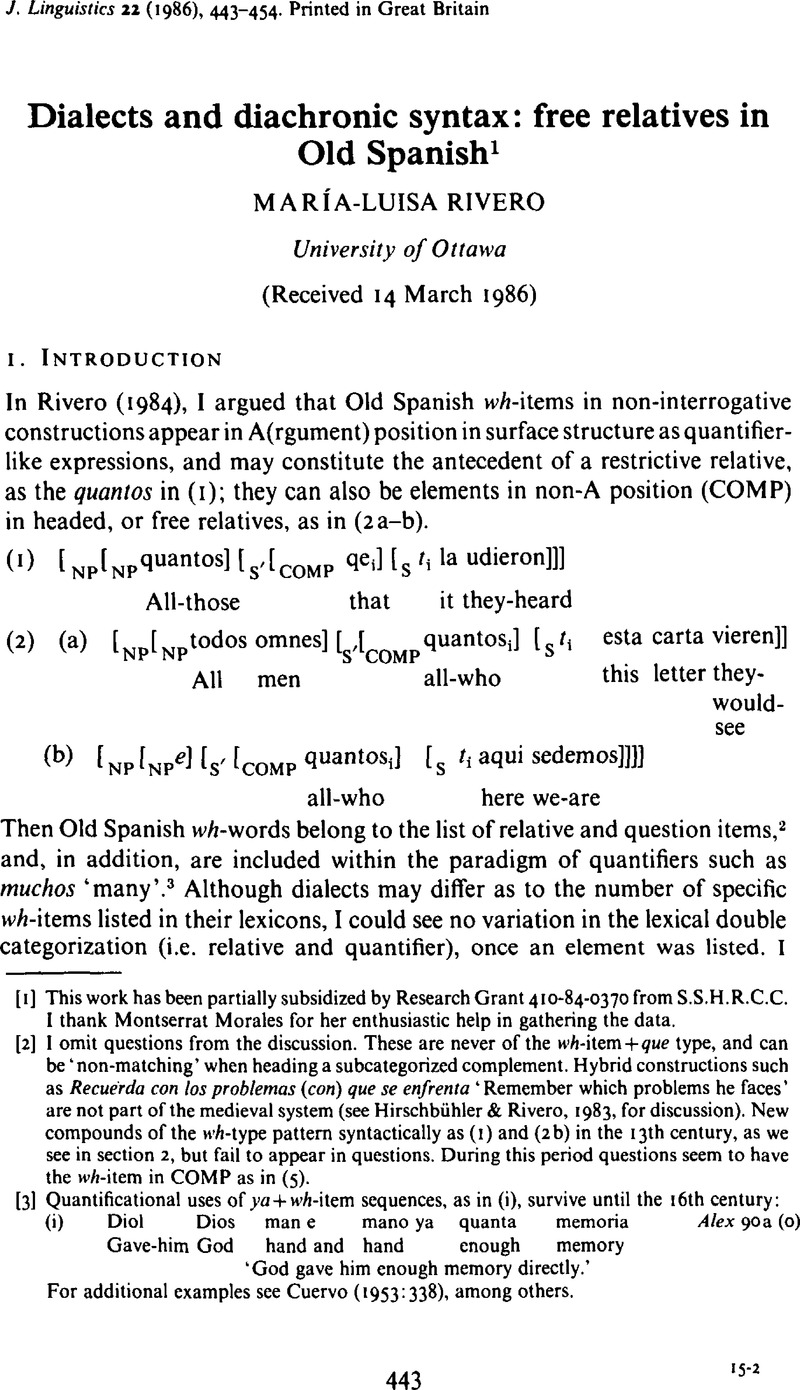Crossref Citations
This article has been cited by the following publications. This list is generated based on data provided by Crossref.
Fava, Elisabetta
1996.
Questioning interrogative interpretation in some Indo-European languages.
Language Sciences,
Vol. 18,
Issue. 1-2,
p.
87.
van Riemsdijk, Henk
2006.
The Blackwell Companion to Syntax.
p.
338.
2006.
The Blackwell Companion to Syntax.
p.
439.
Ojea, Ana
2013.
A uniform account of headless relatives in Spanish.
Language Sciences,
Vol. 40,
Issue. ,
p.
200.
van Riemsdijk, Henk C.
2017.
The Wiley Blackwell Companion to Syntax, Second Edition.
p.
1.
Pinto, Clara
2023.
On the Emergence of Portuguese FCI qualquer: A Diachronic Perspective.
Languages,
Vol. 8,
Issue. 4,
p.
290.
Agulló, Jorge
2024.
El pronombre reasuntivo en español como mecanismo de concordancia.
Círculo de Lingüística Aplicada a la Comunicación,
Vol. 97,
Issue. ,
p.
121.





